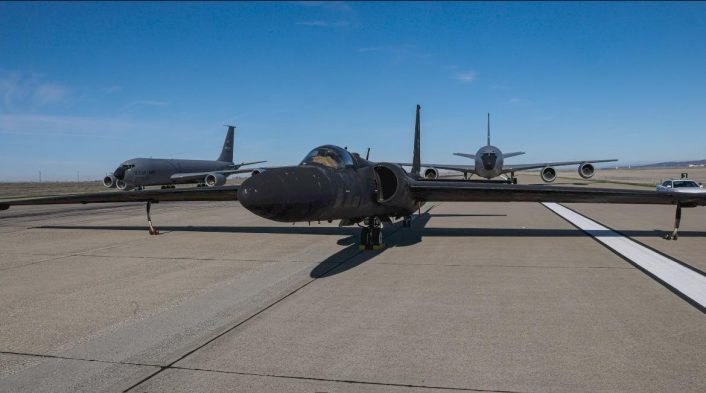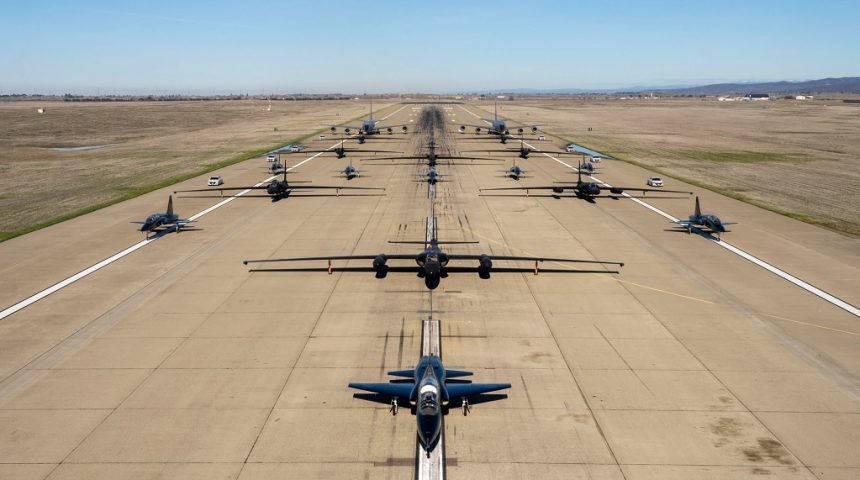Eight U-2s lined up on Beale’s runway, together with nine T-38s and two KC-135s.
The U.S. Air Force released photos of a rare elephant walk with the U-2 Dragon Lady at Beale Air Force Base, California. For the occasion, on Jan.4, 2024, eight U-2s of the 99th Reconnaissance Squadron (including two twin-seat TU-2s) lined up on Beale’s runway, each accompanied by a chase car, together with nine T-38s of the 1st Reconnaissance Squadron and two KC-135s of the 940th Air Refueling Wing.
This was reportedly the first time in decades an exercise of such type is performed at Beale AFB and might as well be one of the last times, since the U-2 is approaching the end of its long career. The Air Force, in fact, decided to start in 2025 the retirement of the type and expects to complete it by 2027. By then, the U-2 will achieve 70 years of operational service, having flown for the first time in 1955.

The current fleet is made of 27 aircraft, including the few remaining TU-2S two-seat trainers. Two ER-2 are operated by NASA (although it’s unknown if NASA will continue to operate them after 2027). U-2s are home based at the 9th Reconnaissance Wing, Beale Air Force Base, California, but are rotated to operational detachments worldwide, including RAF Fairford, UK; RAF Akrotiri, Cyprus; Osan Air Base South Korea.
Even with retirement approaching, elephant walks are important exercises showing the unit’s readiness and their capability to rapidly generate high volumes of operational sorties. Able to fly at over 70,000 ft with a long endurance, the U-2 has always been fundamental in proving key intelligence, especially in the form of signals, imagery, and electronic measurements and signature intelligence, or MASINT.

Initially expected to be replaced by the RQ-4 Global Hawk, which is also being retired by 2027, the U-2 is apparently now being replaced by the highly classified RQ-180, which has never been officially acknowledged despite being most probably spotted multiple times. Many consider the RQ-180 to be already operational because of the reduction in the number of RQ-4s, with the newer, more capable RQ-180 possibly taking over missions previously assigned to RQ-4s.









